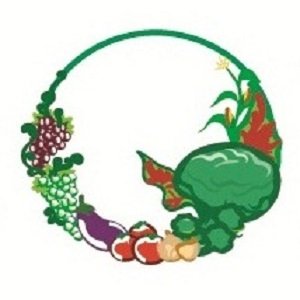Jack’s BUG Week #11 8-28
Hello and welcome to week 11 of the Featherstone Farm Summer CSA program. A lot of new items in the box this week, a lot of excitement. I'll talk a lot about storage of certain things that have been harvested in heat this week for a change, not cool, and what that means for making good use of these crops for your box. We're taking a week off of sweet corn, a lot more coming in the next week or two, but no CSA sweet corn this week.
We have our first muskmelons and some more personal size watermelons. These are really coming on strong now with the most recent heat, but they're still not enough for every box. Lots of muskmelons in particular are coming. I had one the other day that was really good.
We have more of these field-grown hakurei turnips, which I cannot talk enough about. This is an ideal summer dipping veggie when it's warm. Thin slice these guys, you don't need to skim them. And the tops are also nice enough that they can be used for a whole range of stewing dishes, turnip greens, big southern food, and I grew up eating them myself. Look up recipes for turnip greens.
We have the first ever Featherstone Farm celery this year. I am so excited this week. Congratulations, Abby. This is a high tunnel grown crop. This is something that in many, many, many years of experimentation, we have proven we cannot grow outside with the rain. But in the high tunnel, these plants are grown in the ground, covered high with plastic. These are beautiful and ready for dips. Really exciting celery for the first time.
Red bell peppers, you've heard me talking about them for a period of time. We've got a lot now, big, fat bell pepper crop. These are four lobe types. There's good body to them, sweet as sugar.
There are tomatoes this week, but a range of them once again. This is a ripening issue like the somewhat intermittent melon production. There are quite a few. There are quite a few tomatoes that are heirloom types, red slicer hybrid types, and some paste types, San Marzano paste tomatoes. We don't have enough of each of them this week to get dedicated bags to members separately, but in future weeks, we should be able to allocate heirloom tomatoes separate from paste tomatoes, separate from red slicers. But what we have now are large bags, two pounders of mixed tomatoes. Again, not a ton of color on these, so they will ripen better in the paper bag, closed up at room temperature in your kitchen.
Summer sun gold tomatoes. These are just so tasty, good to eat, and still have a really good flavor. The disease has not wrecked the plants just yet, so good sun gold.
We have a couple of other pepper and salsa options here. Folks, these are shishito peppers. Again, something that Abby has really encouraged us to try the last few years. These are a Japanese frying pepper. What I recommend doing with these is starting a cast iron skillet, get it up to pretty darn warm. I've done the blackening both with oil and without. Advantages and disadvantages of each, but in essence, you're going to put these peppers right into a very hot skillet and move them around with the tongs or with a spatula over a three to five minute period, six minutes if you like them really blackened, charred on the outside. They'll get quite limp, and I scoop them out of there and put coarse salt over them, eat them just like they are right there, one biters. These are a really great Japanese delicacy, and I really recommend them. Not spicy, but of an unusual flavor that I think you'll really enjoy.
This week's recipe is for tomatillos, and we have a lot of really wonderful tomatillos. Another summertime specialty. Antonio has been working here for many years, and you have seen his recipe for green tomatillo salsa in last week's electronic newsletter. Here it is in hard copy form. Again, I've made this myself a couple of times recently. Really fine eating by husking the fruits, roasting, blackening them on a grill or in a skillet, and then blending in this way that Antonio recommends here. So wonderful tomatillos and the recipe in the box.
A couple more things I'll talk about this week. Parsley, lacinato kale, and then leaf lettuce. Folks, these are tender leafy greens. These have been picked in the last 24 hours in unbearable heat. You can imagine very, very hot nights. They become limp, and so I'm strongly going to recommend that any of these things, lettuce, parsley, kale, just take it when you get this out of your box. Get it home. Trim a half an inch off the bottom. Trim a little bit off the base of that lettuce without peeling the leaves, and simply place that in a glass of water for an hour. That will bring the vitality back into the parsley, into the lettuce, into the kale. Then you can put them in a plastic bag, and your refrigerator will keep much better than it would have without that freshening up when it arrives. Again, just small cost of heat, the kind of heat that we need to bring on the melons, the red peppers, the tomatoes, other warm season fruits. So I'd recommend you freshen up and enjoy this this week.
We'll see you next week, folks. Thank you.














